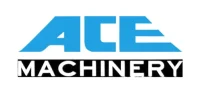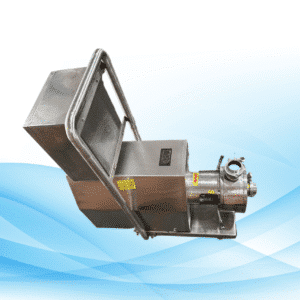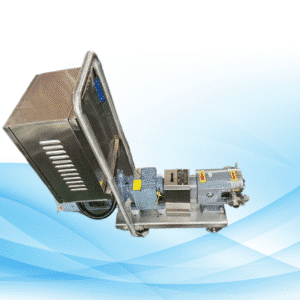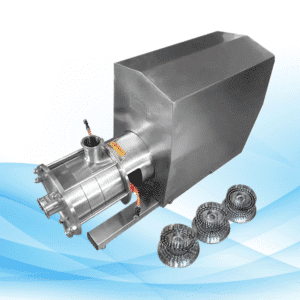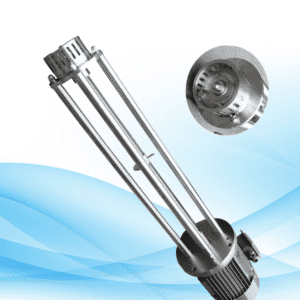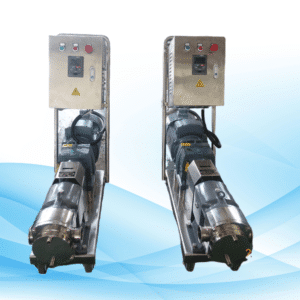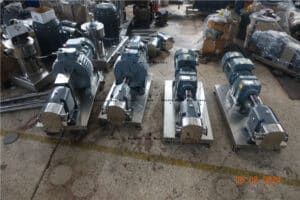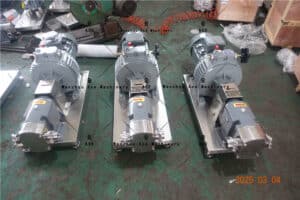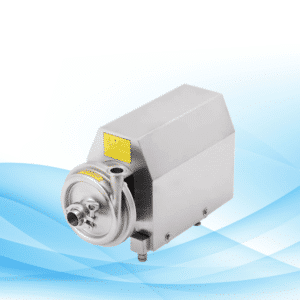Introduction to Rotary Lobe Pumps
Rotary lobe pumps have a very wide range of use and in their applications; they are of great service in helping to transfer and distribute fluid medium. Knowledge of their operation and characteristics is vital for their efficiency. Understanding how pump curves work is at the center of this comprehension. The information includes the working range of a pump in liquid waste treatment to food processing oxygenated beverages and so on.
Importance of Understanding Pump Curves
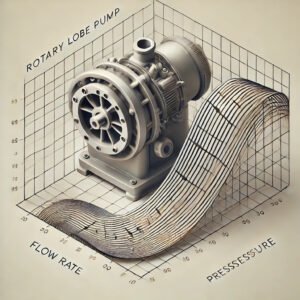
Pumps curves are basically graphical plots that show the relationship between the flow rate, head and efficiency of a pump. These charts are important tools, or diagrams, to an engineer and an operator while making a choice of a pump type appropriate for a particular purpose. The benefits of understanding how to read and assess these curves would include users getting appropriate pumps for their respective systems.
Brief Mention of Applications
Rotary lobe pumps are used in food and beverage, chemical processing and pharmaceutical industry amongst other industries. Each application being examined will need a particular style of pump to be selected and the rotary lobe pump performance enhanced so that the appreciation of rotary lobe pump curves becomes even more appreciated.
Understanding Rotary Lobe Pumps

Basic Principles
Definition and Function
A rotary lobe pump consists of two or more lobes that rotate within a casing, thus allows moving fluids by enclosing a space into which they inhale rotary pumps. The rotation creates a negative pressure that sucks in the liquid and then ejects it from the outlet. This mechanism provides for soft pumping of fluids which are sensitive to shear stress, hence a wide range of applications for these pumps.
Key Components
Key components of the rotary lobe pumps includes lobes, housing, rotor and drive mechanization. Each part of the pump has a specific function in the efficiency and effectiveness of the pump, and knowing these parts assists in providing performance curves associated with these parts.
Types of Rotary Lobe Pumps
Single Lobe
The single lobe pumps do have an active rotary pump as it has one rotor and therefore, it is easy and reliable. Apparently, it will be however not able to give the accompaniment of flow as in the case of multi-lobe designs.
Double Lobe
Double lobe pumps contain two rotors, and it is in this case that it manages to flag up even higher efficiencies than single lobe pumps. Such are needed in almost every industry that calls for safe bulk movement of fluids.
Triple Lobe
These pumps have three rotors and are quite advantageous as they provide maximum efficiency and tangential forces’ reduction, which leads to precision applications environment.
What Are Pump Curves?
Definition and Purpose
Pump curves depict the performance of a rotary lobe pump under various working conditions. They show the relationship between flow factors and head against speed or type of liquid being pumped.
Explanation of Pump Curves
A generic pump curve comprises several lines, each line representing a performance index. Comprehension of these lines illustrates the best operational range for the users’ envisaged needs.
Importance in System Design
Pump curves should be included in design activities. They guide engineers on how to properly choose the pumps fitting with the system in terms of performance and efficiency parameters.
Components of a Pump Curve
Flow Rate
Flow rate is the measure of the amount of liquid that can be transported by a pump during a determined time period. It remains one of the most important parameters in the evaluation of a pump’s performance and applicability to a particular task.
Head
Head simply refers to the height to which a pump can impart energy to a liquid. Comprehension of the head characteristics of a rotary lobe pump is important to enable proper application of the pump.
Efficiency
Efficiency refers to the effectiveness of a pump in converting the supplied energy to hydra e attributes. High efficiency pump results into energy savings and low operational cost.
Interpreting Rotary Lobe Pump Curves
Reading the Curves
Identifying Key Points
Some crucial points that the user should press upon include the best efficiency point (BEP), shut off head and maximum flow amount when reading pump curves. These parameters give an understanding of the optimum pumping capabilities of a pump.
Understanding Curve Shapes
The configuration of the curves can give an idea of what the operation of a pump under the specific conditions will be. There are numerous curve shapes suggestive of a stable performance, whilst there are others that are shaped in such a way that predict a problem that is about to arise.
Common Misunderstanding
Overestimating Efficiency
There is a very common mistake of perceiving a pump to be a more efficient one than it really is, based on the curve. Real situations and the losses that may hinder such performance have to be factored in.
Relative to Flow Rates
The incorrect reading of the flow rates leads to wrong selection of pumps. It is of paramount importance to ensure that the two complement each other, with no excess or a deficit on either end.
Practical Applications
Conclusions from Case Study
Selecting the Right Pump
Matching Pump to System Requirements. It is important to make sure that when fitting a rotary lobe pump to its application, the performance parameters of the pump and application are appropriately matched.
Matching Pumps to Different Fluids
Different fluids typically do not constrain the selection of the pump and its settings. Therefore, knowledge of these properties is significant to the maximal work of the pump.
Troubleshooting and Optimization
Triage of Identified Problems – Performance Issues
Routine scrutiny of pump curves serves to diagnose performance troubles. This preventive measure equips users with the ability to solve problems before they arise and worsen and turn out even to be catastrophic to the system.
Make Appropriate Adjustments for Maximum Performance
Performance below the pumped fluid is acceptable where the curve interpretation has been applied to adjust pump parameters. This will work towards enhancing the performance of the systems, leading to operational efficiency and cost reduction.
Critical Assessment of Rotary Lobe Pumps as Compared to Other Types of Pumps
Pros and Cons
Efficiency Comparisons
Rotary lobe pumps have proved to be efficient, particularly when dealing with high viscosity fluids. It is prudent to perform cross pumping comparison in order to understand the set requirements and look for the most appropriate solution.
Cost Considerations
While rotary lobe pumps may require higher capital costs at times, the operational efficiency and durability of these pumps make the investment worthwhile.
Application Suitability
Best Use Cases
Rotary lobe pumps perform very well in processes that require volumetric accuracy and careful movements of delicate fluids. Outlining the most optimal use cases guarantees the proper implementation of a given application.
Limitations
Despite their advantages, rotary lobe pumps have their own backwardness, which is certain applications where solid or abrasive contingencies cannot be used.
Conclusion
In conclusion, it is important to say that knowing how to read rotary lobe pump curves and to make certain determinations on the possibilities of the selected equipment is essential. Labor is enhanced and costs reduced thanks to more insightful strategic choices made possible by proper comprehension. Yohannes et al. When this understanding is utilized in day to day operation, rotary lobe pumps will operate at optimum levels and the intended business objectives will be achieved.
